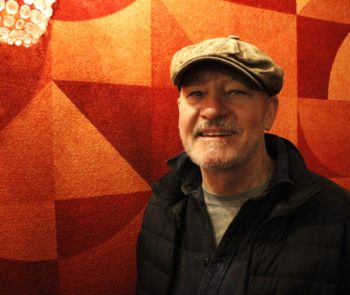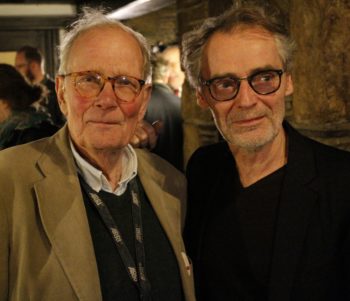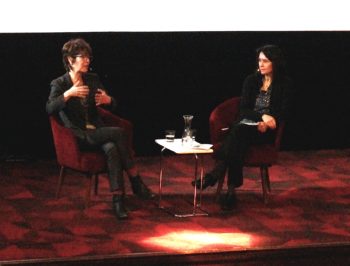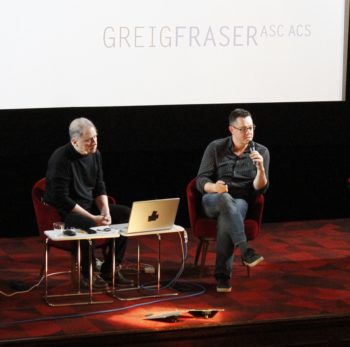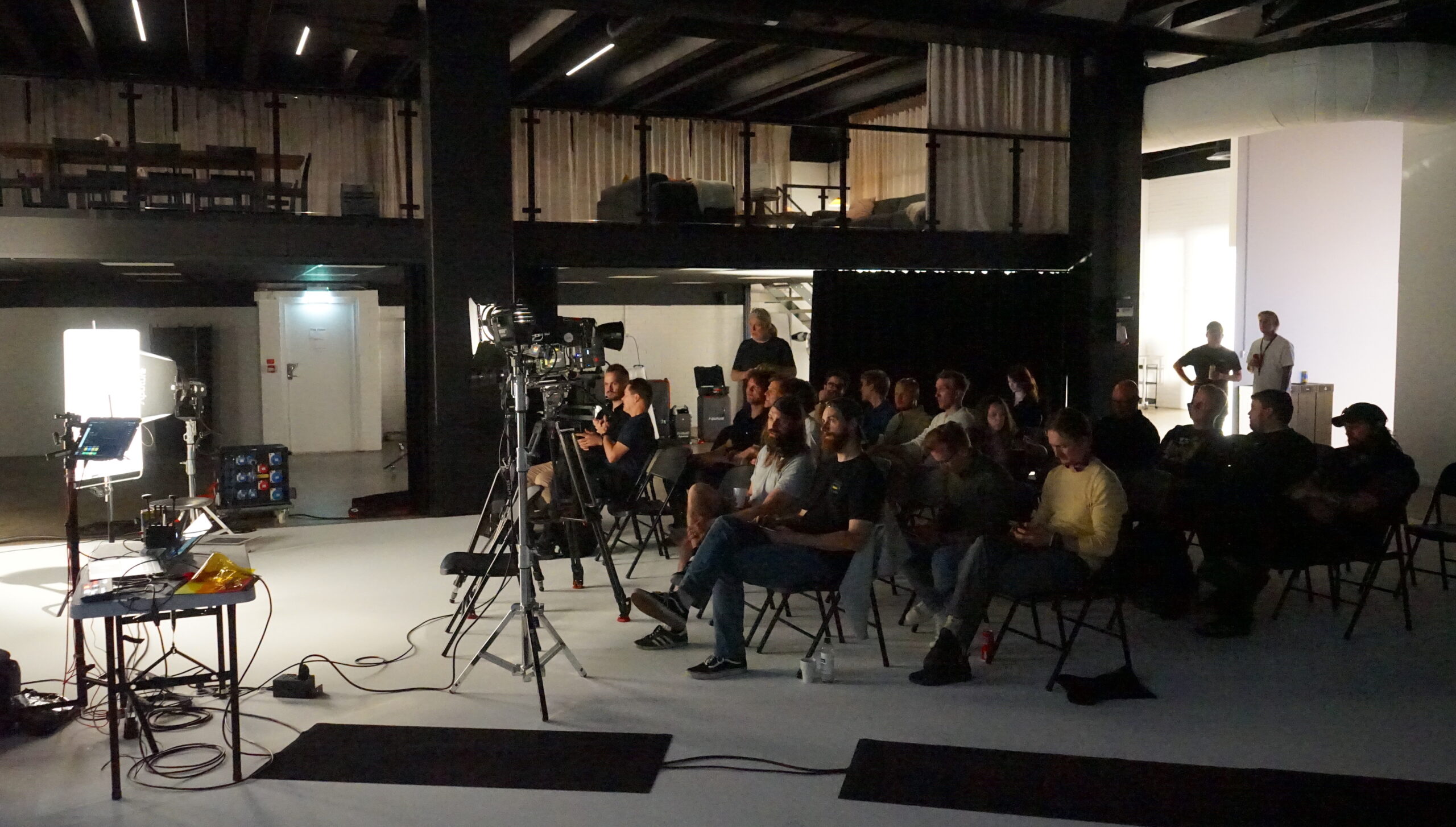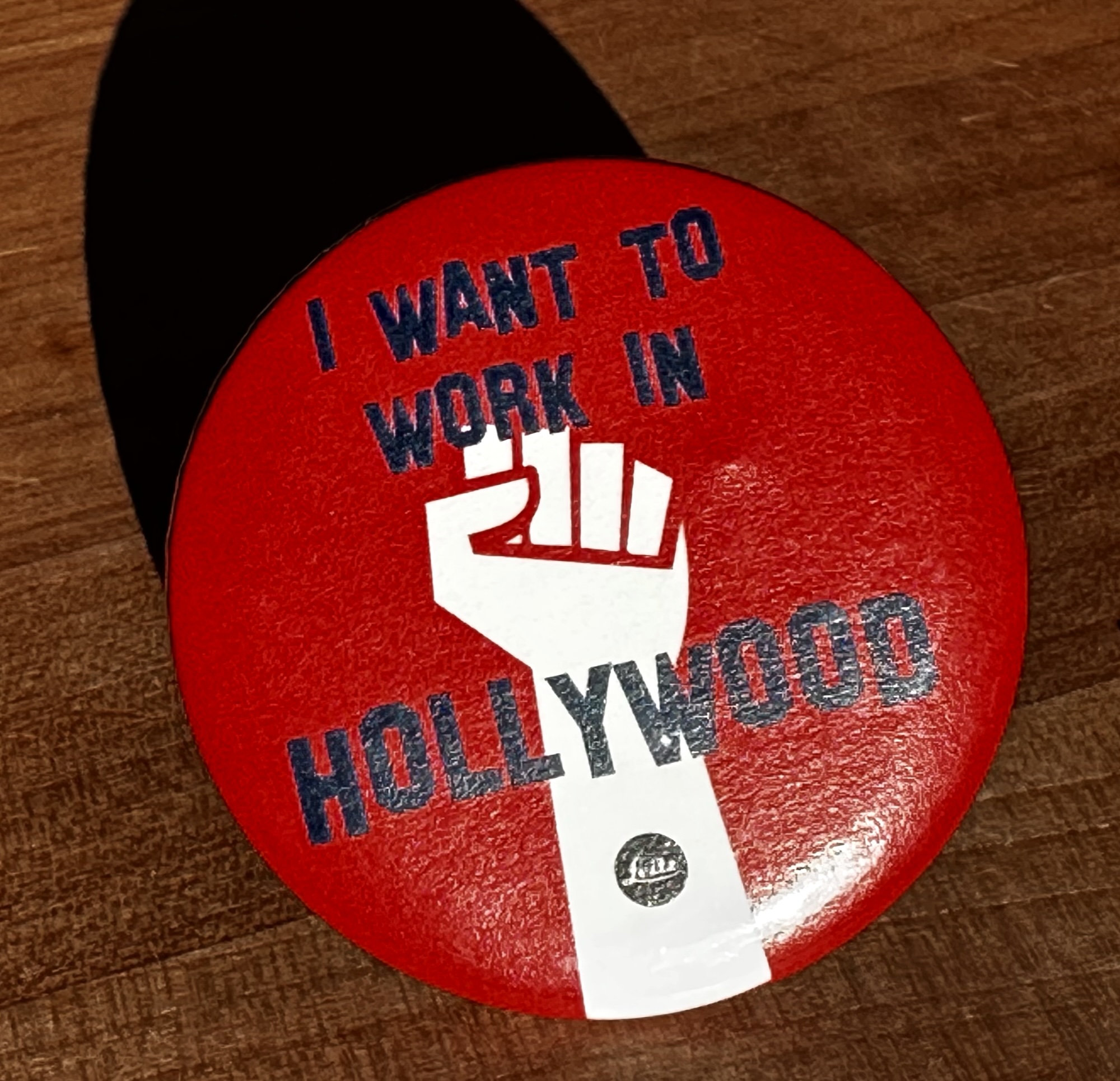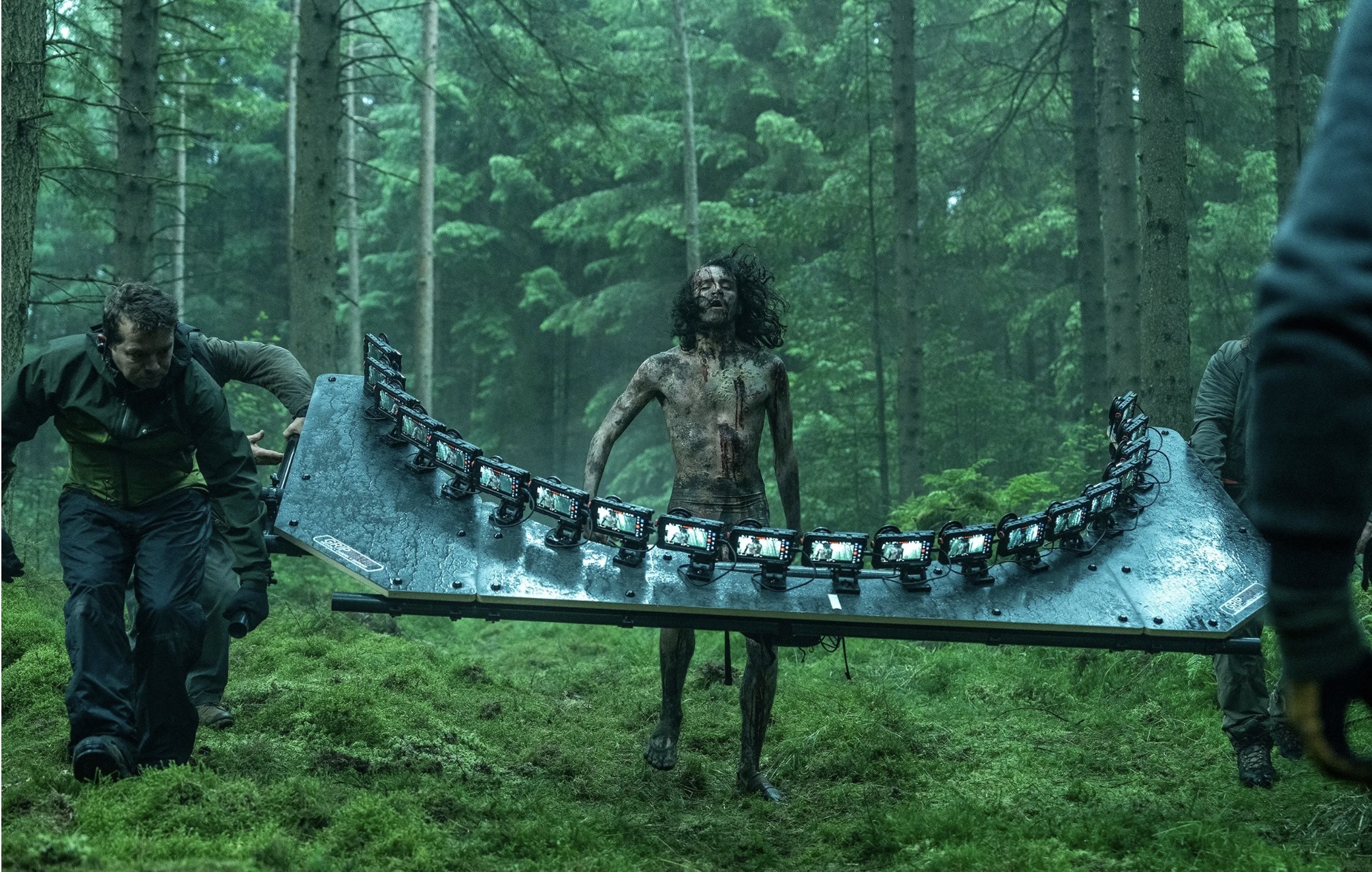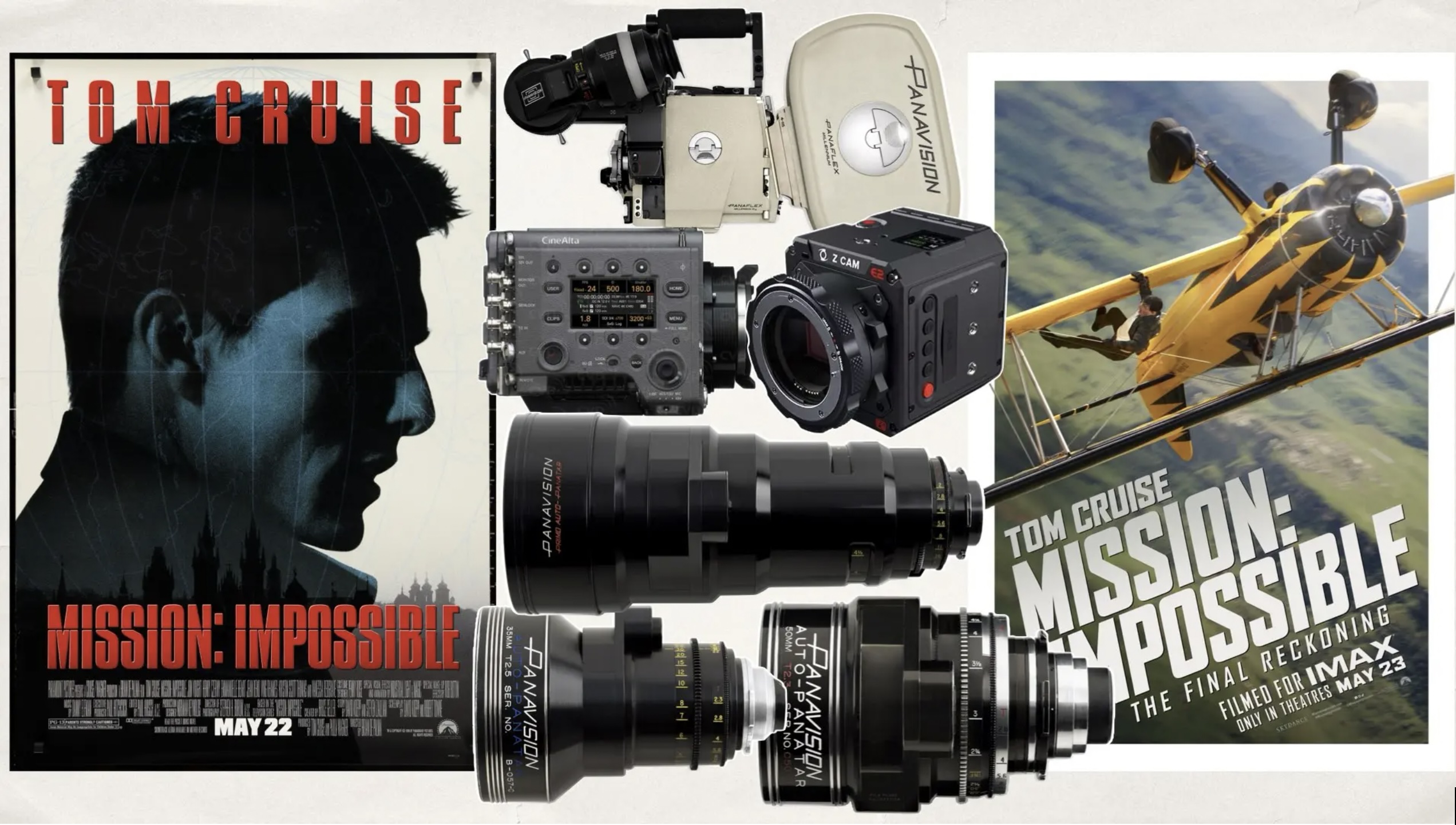Inspiration Vienna
Between january 25th and 27th 2019 the IMAGO MasterClass Committee presented the ”Inspiration” lecture event, held in Vienna Austria. The IMAGO Masterclasses are celebrating this year their 10th anniversary, and besides the IMAGO Committee, the Vienna Filmcommission and in fact even the city of Vienna itself(!) have joined forces to make this a truly memorable event! Featuring no less than four extensive cinematography Master Classes, it is a veritable smorgasbord of lectures on cinematography, and 160 cinematographers from 25 nations are in the audience!
Myself personally, I sensed I was in for a three day cultural ”overdose” (and I mean that in the best way possible) already when I boarded the Austrian Air flight to Vienna, and they had Strausswaltzes softly playing over the loudspeakers in the airplane cabin!
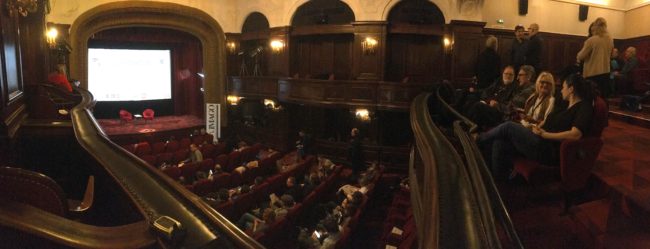
The interior of the amazing Metro Kinokulturhaus. Founded in the 1840s, it even survived a direct bomb hit in 1945!
And in Vienna we are treated to a very impressive cinematographic line-up indeed! The guest speakers are: Barry Ackroyd, BSC, Dan Laustsen, DFF, ASC, Maryse Alberti and Greig Fraser, ACS, ASC. Offering one Master Class each on Friday and Saturday, and two Master Classes on Sunday the 27th, the event is held in the Metro Kinokulturhaus cinema, a gorgeous theatre with a historic past dating back to the 1840’s.
Already ”on paper” you can find some common denominators among the guest speakers. Ackroyd and Frasier have both collaborated with Kathryn Bigelow on her gut-wrenching, uncompromising war dramas: The Hurt Locker and Zero Dark 30 respectively, and Ackroyd and Alberti have both delivered outstanding feature film cinematography on 16mm film (The Hurt Locker and The Wrestler respectively).

The IMAGO Master Class Committee, left-to-right: Jan Weincke, DFF, Astrid Heubrandtner Verschuur, AAC and Ron Johanson, ACS.
Friday at 1pm the event officially opens at the Metro Kinokulturhaus, and the IMAGO MasterClass Committee enters the stage to wish everyone welcome and to explain the proceedings. Ron Johnson, ACS, evokes laughter from the audience when he explains the wardrobe guidelines: ”please hang your overcoats in the downstairs lobby, but don’t leave any valuables in your clothes, because I will be going through them later. Remember, Australia is a nation of convicts!”
The Barry Ackroyd, BSC, Master Class is very capably moderated by Volker Gläser, and Ackroyd starts the proceedings off by paying tribute to Chris Menges, BSC ASC, whom he considers to be his cinematographic mentor. Clips are shown from three seminal titles shot by Menges: The Mission (1986), The Killing Fields (1984) and Ken Loach’s Kes (1969). The latter in particular struck a deep chord in Ackroyd when, in his youth, he first saw it. And when one day much later Ken Loach asked him to shoot a feature for him, Ackroyd didn’t need many seconds to make up his mind about accepting the offer.
Ackroyd wound up finally shooting altogether 12 features for Loach, one of the last being The Wind that shakes the Barley (2006). Set in Ireland in the 1920s, Ackroyd considers this film to be Loach’s masterpiece. Barry is also a big fan of shooting on film, and all titles screened during this Master Class were originated on either 16 or 35mm film.
Ackroyd sums up what attracts him to a project, ”I try to find my voice, my own voice, in someone elses story. I feel I work for the director, not for the producer or the studio. I try to translate the passion of the actors and the story through the camera. If the director recognizes your voice, then you’re in good shape”.
Ackroyd also has firm convictions about working conditions on a film set, explaining: ”I just finished a film in the US, and we wrapped our days in time, and everyone was happy that they could go home and see their families! You can finish a day’s work in 10-12 hours instead of in 15-16 hours!”
And speaking of time, this three hour Master Class flies by as if it were 20 minutes, and is rounded off with two enormously adrenaline-charged titles: Kathryn Bigelow’s The Hurt Locker (2008) (for which Ackroyd was nominated for an Academy Award) and Paul Greengrass’ Captain Phillips (2013).
Ackroyd reveals that the final sequence from Captain Phillips was shot off the coast of Malta, on a studio set in London and on actual American navy war ships in the US! That the resulting footage appears completely seamless and gut-wrenchingly realistic is a tribute to Ackroyd’s considerable cinematographic skills.
After the well-deserved applause for this opening Master Class, we’re treated to a delicious meal in the theater’s foyer, followed by the screening of Claire Pijman’s fascinating and moving documentary portrait of dutch cinematographer Robby Müller, Living the Light. A Q&A with Claire Pijman rounds off the evening.
The Saturday programme starts off with an equally riveting Master Class with Danish Ace DoP Dan Laustsen, DFF, ASC, conducted by Andreas Fischer Hansen, who in fact, once upon a time, was Laustsen’s teacher at the Danish film school.
Besides being fascinating in it’s own right, this Master Class is also wonderfully loose and laid back in the best Danish manner, with Fischer Hansen sometimes spontaneously wandering off stage to check something with the arrangers. In contrast to this, some extremely action-packed clips from John Wick II (2017) are screened! Laustsen clarifies: ”they rehearse the stunts for 2-3 months before we start shooting. They really are fighting intensely, I’m sure it must have hurt like hell, and I don’t understand how Keanu Reeves does it: he does most of his own stunts. Shooting in the warehouse we had to go back and forth between the car chase and the fighting, because the fighting was so exhausting for the performers”.
Fischer Hansen evokes hearty laughter from the audience when he wittily asks Laustsen: ”how does John Wick survive, with all these guys shooting at him with machine guns all the time?”
Laustsen’s extensive experience from American large-scale productions leads to some very interesting discussions on set pre-lighting practices. Some of the more elaborate studio sets on John Wick II took two months to build and about equally as long to light, since already getting all the power cables in place becomes a major undertaking on such a big set.
Laustsen also made the transition from film to digital in an effortless manner and now exclusively shoots digitally, but his artistic mindset remains the same as in the old days, as he explains: ”I try to get everything right in the camera, I don’t shoot it clean and then play around later. My dailies look exactly like the finished product”. But he also sees challenges for the present-day cinematographer: ”we’re losing control over our images -your movie will be shown on an airplane with the sun coming in through the windows”.
The second half of the Dan Laustsen Master Class focuses on his celebrated collaborations with Mexican director Guillermo del Toro, and with the first film, Crimson Peak (2015), the theme of enormous sets continues! The entrance hall to the Victorian mansion in which much of the film takes place was a set three stories high, adjusting anything on that set meant constantly using cranes and cherrypickers.
Laustsen also shows us a ballroom sequence from the same film, which was quite challenging from a lighting point of view, as the camera continuously pans around the room supposedly only lit by candle light! Laustsen came up with a very clever solution for this one: there were a large number of KinoFlos in the ceiling which were dimmed up when they were not in the shot, and dimmed down whenever the camera was pointed in their direction.
The second Guillermo del Toro collaboration is of course extremely well-known: The Shape of Water (2017), for which Lausten was nominated for an Academy Award for Best Cinematography. This was in fact a very modestly budgeted film, and it is a tribute to Laustsen’s skillful cinematography that this is nowhere apparent in the imagery!
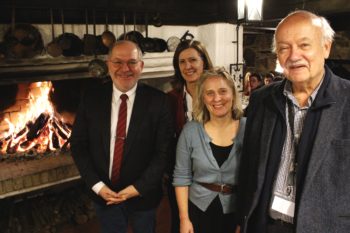
Saturday evening was rounded off in a traditional Viennese Heuriger. From-left-to-right, Omar Al-Rawi, member of the Vienna city council, Marijana Stoisits, managing director of the Vienna Film Commission, Astrid Heubrandtner, AAC, and Paul René Roestad, FNF, President of IMAGO.
The rest of the Saturday schedule consists of delightful activities: a guided Vienna tour on foot, followed by a bus ride all the way up to the Vienna Woods and winding up in a traditional Viennese Heuriger restaurant.
The Sunday schedule is quite intense as it offers two Master Classes! Claire Pijman moderates the first one showcasing the work of cinematographer Maryse Alberti. This again is a different brand of Master Class, as Alberti proves to be an unstoppable talker (hey, she’s french!)
Born in a small village in France, Alberti quickly shifted to New York and broke into stills photography, focussing on the vibrant Rock’n’Roll scene there in the 1970’s. She soon started to shoot super-8 films and segued into documentary filmmaking which eventually led to feature films, one of the first being Velvet Goldmine (1998).
One of the most famous projects Alberti has worked on is Darren Aronofsky’s The Wrestler (2008) which she shot on 16mm, and for which a documentary look was a high priority. Alberti wound up shooting about 90% of the film with a 12mm lens, exercising great care not to get too close to the actors in order to avoid visual distorsion.
Of course, all the wrestling in this film led to Alberti being offered to lens the boxing drama Creed (2015), which she opted to shoot on the Arri Alexa. We’re shown two clips from the film, a long steadicam take following the main characters into a gym, as well as an almost unbearably intense fighting sequence shot in one continuous take. The footage abounds with muscular men, shouting and aggressive behavior, and Alberti is half jokingly asked by the audience: ”how can you handle this amount of testosterone on a movie set?”
But on a more serious note, Alberti points out that ”everyone on the set was very polite and respectful, it wasn’t hard to work with these people” and continues to give a more general piece of advice, ”always be humble and respectful with the people you work with, whether it’s real people on a documentary, or actors on a set”.
Alberti is a frequent collaborator with directors Tod Haynes and John Curran, having shot several features for each one. Towards the end of the Master Class two sequences from Curran’s Chappaquiddick (2017) are screened, and this is a much different type of film from the earlier more documentary style films, here actors clearly have to hit their marks and compositions are carefully planned during preproduction.
After the lunch break it’s time for the Greig Fraser, ACS, ASC, Master Class moderated by Benjamin B, which opens with the provocative idea of ”anti-inspiration”!
It turns out, although the theme for this entire event is inspiration, Fraser is a firm believer in practicing ”anti-inspiration”. By that he means that, when he’s preparing or working on a new project, he is very restrictive with watching other peoples movies! Fraser feels that the impulse -consciously or unconsciously- to be influenced by what he has just seen, can be a hazard on a film set: maybe he’s working on a project that is supposed to look cold and sterile with locked off cameras -and he’s just seen this really cool film where it’s all warm colours and handheld cameras…
Frasers work spans over titles as diverse as Let me in (2010), Killing them softly and Zero Dark 30 (both 2012) as well as the Star Wars franchise blockbuster Rogue One (2016). We are shown clips from these and even more titles.
Killing them softly was shot on 35mm anamorphic and Panavision lens engineer Dan Sasaki had constructed a special 50mm lens with extreme bokeh for this film: it would turn a line of light poles in the background into a forrest of vertical images.
This film also features an extremely violent but quite fascinating sequence in which actor Ray Liotta plays a character who gets shot. Amazingly, the scene was filmed using an extreme slowmotion 35mm prism camera at something like 5000 fps; it’s real bullets leaving the nozzle of a handgun, real glass shattering. Fraser explains ”many filmmakers now are pushing for shooting it for real, and I’m big advocate for that”.
Fraser is also a strong believer in karma, and has a good story to back it up. Years ago, he helped a struggling film school student by donating some unexposed Kodak 5230 stock to him. Then, when Fraser was revving up to shoot Rogue One, a Star Wars story (2016) with the Alexa 65, he wanted to base his LUT on Kodak 5230, which by then Kodak had discontinued -and found out that there was no unexposed stock anywhere in the world! Fraser then contacted his film school protégé, who it turns out had 50 feet of unexposed 5230 at the bottom of his fridge, under the frozen vegetables!
At the end of the Benjamin B/Greig Fraser Master Class, the whole audience gathers in a standing ovation to the members of the IMAGO Master Class Committee as IMAGO President Paul René Roestad, FNF, hands over bouquets and gives a short closing speech. A courtesy bus to the airport has been arranged, so everyone flying out the same evening hurries to that bus. Smiles and good cheer is everywhere, and perhaps Greig Fraser most succinctly sums up the whole weekend when he commented towards the end of the event: ”enough cinematographic inspiration has been offered here to last a lifetime!”
Lars Pettersson, FSF

